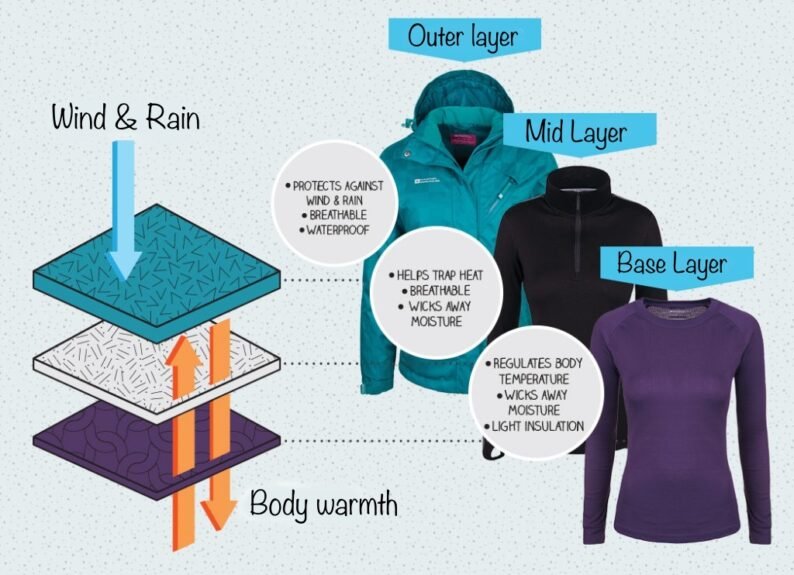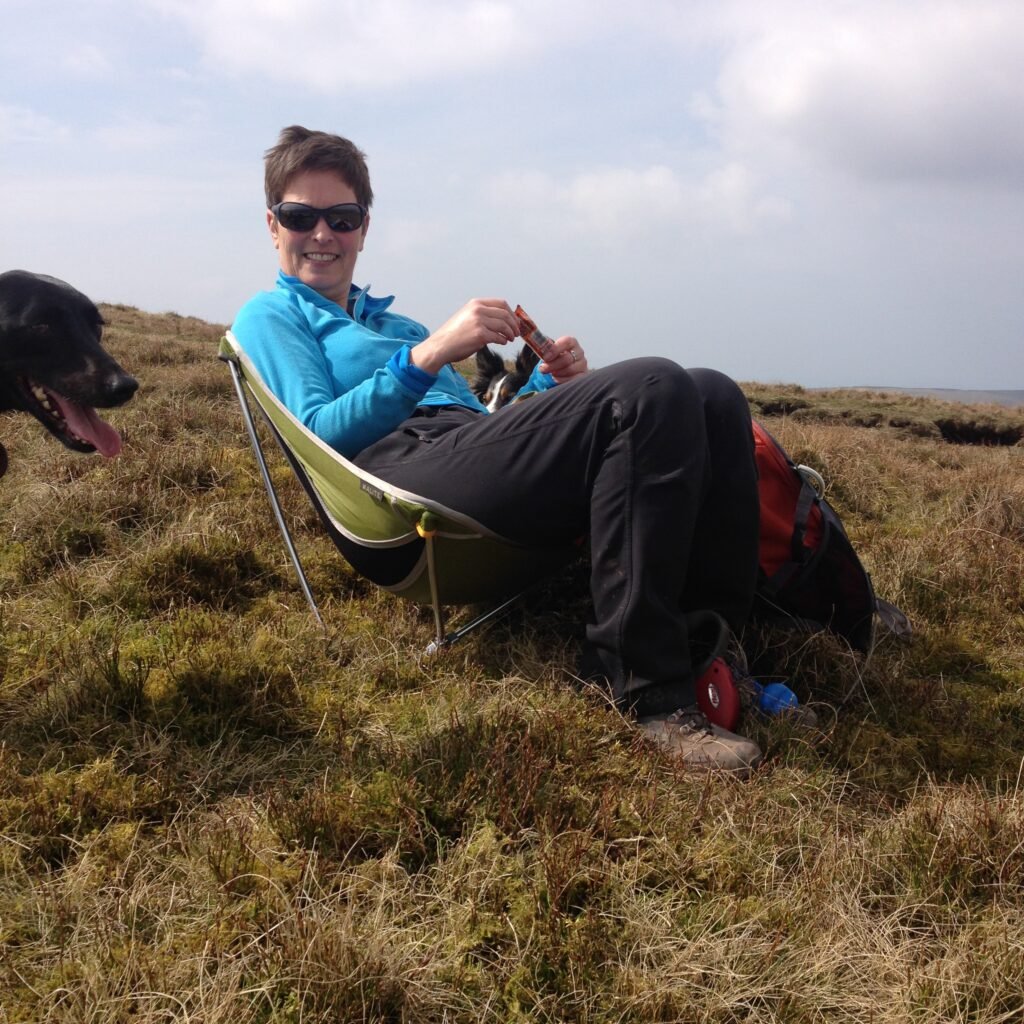The Layering System

You will probably of heard of the layering system, but do you really understand it and what it is does?
We’ve put together a guide to explain what it is and options that you have…we all like options! 
The diagram above shows the basics of the system.
The idea of the system is to give versatility, we all know here in the UK we can have all 4 seasons in one day! The aim is to cope with all the variables that go with rapidly changing weather conditions together with fluctuating physical exertion, from hiking up a steep hill, to having your sarnies at the top.
The general rule of thumb for the layering system is: base layer + mid layer + outer layer = comfort. By adapting your base, mid and outer layers you can remain comfortable throughout ever-changing conditions.
So lets look at them in a little more detail, what they are supposed to do.
The BASE LAYER is the bottom layer and is worn next to the skin. A base layer has two main functions: it regulates your body temperature and wicks moisture away from the skin. Cotton shouldn’t be worn next to the skin as it absorbs moisture well, but reluctant to release it, check how long it takes for cotton tees to dry on the washing line.
If sweat is trapped against the skin then as soon as the level of physical exertion drops, for example eating your sarnie at the top of a hill, you can quickly become too cold.

Me taking a lunch break in the Brecon Beacons
There are two main materials used for base layers, synthetic materials like Polyester and Polypropylene which are excellent at wicking moisture, helping it to evaporate quickly. The second option is wool which is also an effective material and a popular choice for hiking. Merino wool in particular is non-itchy, wicks and insulates well, and also doesn’t hold onto body odour like synthetics can – great for longer expeditions that compromise personal hygiene!
We then come to the MID LAYER, which is the insulating layer as this is where the warmth comes from in the layering system. This will vary depending on the activity and the ambient temperature. There are several different types of mid layer, all of which aim to trap your body heat whilst remaining breathable when activity rates pick up and it’s necessary to cool down. There is a choice of light, thinner fleeces or slightly thicker fleeces, or insulated jackets. I also use a light windshirt as a mid layer. As with the base layer, quick-drying and breathable material is ideal so the same choices are available. For the winter months, duck or goose down can be an excellent insulator as it has great warmth-to-weight ratio. View some of our range for men and women…
Finally the OUTER LAYER. This is the last defence against the elements in your layering system. A good outer layer or shell will stop lashing rain or howling wind from coming in whilst allowing body heat and moisture to escape, thus avoiding overheating. Waterproofs are the classic outer layer, especially in the UK. Ideally, it should have taped seams, strong and reliable weather protection zips and a good level of breathability. The most popular examples of these are Gore-tex membranes that provide excellent reliability and durability, but most brands have their own equivalent which will be cheaper. View some of our range for men and women..

You will probably of heard of the layering system, but do you really understand it and what it is does?
We’ve put together a guide to explain what it is and options that you have…we all like options! 
The diagram above shows the basics of the system.
The idea of the system is to give versatility, we all know here in the UK we can have all 4 seasons in one day! The aim is to cope with all the variables that go with rapidly changing weather conditions together with fluctuating physical exertion, from hiking up a steep hill, to having your sarnies at the top.
The general rule of thumb for the layering system is: base layer + mid layer + outer layer = comfort. By adapting your base, mid and outer layers you can remain comfortable throughout ever-changing conditions.
So lets look at them in a little more detail, what they are supposed to do.
The BASE LAYER is the bottom layer and is worn next to the skin. A base layer has two main functions: it regulates your body temperature and wicks moisture away from the skin. Cotton shouldn’t be worn next to the skin as it absorbs moisture well, but reluctant to release it, check how long it takes for cotton tees to dry on the washing line.
If sweat is trapped against the skin then as soon as the level of physical exertion drops, for example eating your sarnie at the top of a hill, you can quickly become too cold.

Me taking a lunch break in the Brecon Beacons
There are two main materials used for base layers, synthetic materials like Polyester and Polypropylene which are excellent at wicking moisture, helping it to evaporate quickly. The second option is wool which is also an effective material and a popular choice for hiking. Merino wool in particular is non-itchy, wicks and insulates well, and also doesn’t hold onto body odour like synthetics can – great for longer expeditions that compromise personal hygiene!
We then come to the MID LAYER, which is the insulating layer as this is where the warmth comes from in the layering system. This will vary depending on the activity and the ambient temperature. There are several different types of mid layer, all of which aim to trap your body heat whilst remaining breathable when activity rates pick up and it’s necessary to cool down. There is a choice of light, thinner fleeces or slightly thicker fleeces, or insulated jackets. I also use a light windshirt as a mid layer. As with the base layer, quick-drying and breathable material is ideal so the same choices are available. For the winter months, duck or goose down can be an excellent insulator as it has great warmth-to-weight ratio. View some of our range for men and women…
Finally the OUTER LAYER. This is the last defence against the elements in your layering system. A good outer layer or shell will stop lashing rain or howling wind from coming in whilst allowing body heat and moisture to escape, thus avoiding overheating. Waterproofs are the classic outer layer, especially in the UK. Ideally, it should have taped seams, strong and reliable weather protection zips and a good level of breathability. The most popular examples of these are Gore-tex membranes that provide excellent reliability and durability, but most brands have their own equivalent which will be cheaper. View some of our range for men and women..


